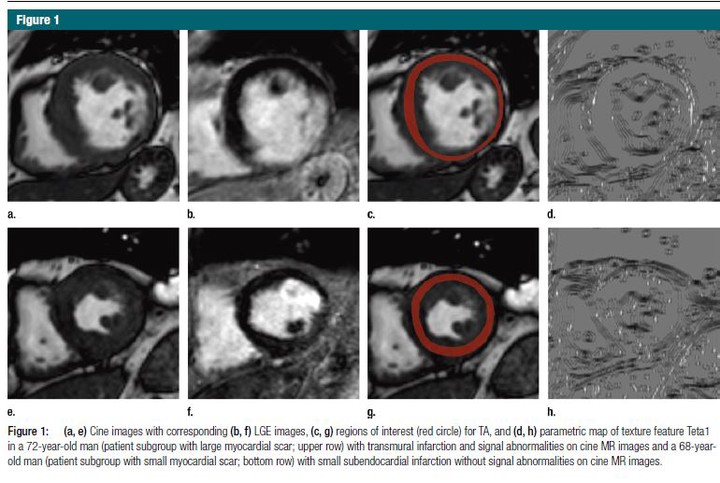Subacute and Chronic Left Ventricular Myocardial Scar - Accuracy of Texture Analysis on Nonenhanced Cine MR Images

Abstract
Purpose To test whether texture analysis (TA) allows for the diagnosis of subacute and chronic myocardial infarction (MI) on noncontrast material-enhanced cine cardiac magnetic resonance (MR) images. Materials and Methods In this retrospective, institutional review board-approved study, 120 patients who underwent cardiac MR imaging and showed large transmural (volume of enhancement on late gadolinium enhancement [LGE] images >20%, n = 72) or small (enhanced volume ≤20%, n = 48) subacute or chronic ischemic scars were included. Sixty patients with normal cardiac MR imaging findings served as control subjects. Regions of interest for TA encompassing the left ventricle were drawn by two blinded, independent readers on cine images in end systole by using a freely available software package. Stepwise dimension reduction and texture feature selection based on reproducibility, machine learning, and correlation analyses were performed for selecting features, enabling the diagnosis of MI on nonenhanced cine MR images by using LGE imaging as the standard of reference. Results Five independent texture features allowed for differentiation between ischemic scar and normal myocardium on cine MR images in both subgroups: Teta1, Perc.01, Variance, WavEnHH.s-3, and S(5,5)SumEntrp (in patients with large MI: all P values < .001; in patients with small MI: Teta1 and Perc.01, P < .001; Variance, P = .026; WavEnHH.s-3, P = .007; S[5,5]SumEntrp, P = .045). Multiple logistic regression models revealed that combining the features Teta1 and Perc.01 resulted in the highest accuracy for diagnosing large and small MI on cine MR images, with an area under the curve of 0.93 and 0.92, respectively. Conclusion This proof-of-concept study indicates that TA of nonenhanced cine MR images allows for the diagnosis of subacute and chronic MI with high accuracy.